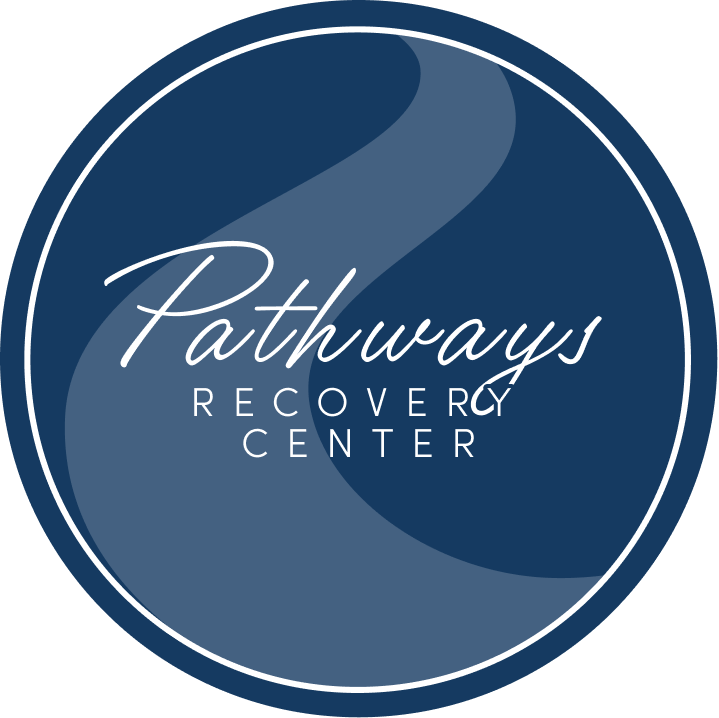Recovery from addiction is a journey that requires ongoing vigilance, self-awareness, and strategic planning. While achieving sobriety is a tremendous accomplishment, maintaining it presents unique challenges that every person in recovery must navigate. Understanding common relapse triggers and developing effective strategies to avoid them is crucial for long-term success in recovery.
At Pathways Recovery Center, we’ve seen firsthand how identifying and preparing for potential triggers can make the difference between sustained sobriety and setback. Through our comprehensive relapse prevention programs, we help individuals build the skills and awareness needed to navigate these challenging situations successfully.
Understanding What Triggers Really Are
A trigger is any person, place, thing, situation, or emotional state that creates a strong desire to use drugs or alcohol. Triggers can be external (environmental factors) or internal (thoughts, feelings, or physical sensations). They often catch people off guard, which is why preparation and awareness are so important.
It’s essential to understand that experiencing triggers is a normal part of recovery – not a sign of weakness or failure. The key is recognizing them early and having a plan in place to manage them effectively.
The Most Common External Triggers
1. People from Your Past Using Days
The Trigger: Encountering friends, family members, or acquaintances who were part of your substance use lifestyle can be one of the most powerful triggers. These individuals may still be actively using, or simply being around them brings back memories and associations with past drug or alcohol use.
How to Avoid It:
- Create clear boundaries with people who continue to use substances
- Develop scripts for declining invitations to situations where substances will be present
- Build a new social network through support groups and sober activities
- Consider temporarily limiting contact with certain individuals during early recovery
- Practice the “HALT” method before social interactions: Am I Hungry, Angry, Lonely, or Tired?
2. Familiar Places and Environments
The Trigger: Bars, clubs, parties, or even certain neighborhoods where you used to drink or use drugs can trigger powerful cravings through environmental cues and muscle memory.
How to Avoid It:
- Identify your high-risk locations and create alternative routes in your daily life
- Avoid places associated with substance use, especially during early recovery
- When you must visit triggering locations, bring a sober support person with you
- Practice visualization techniques to mentally prepare for unavoidable high-risk situations
- Create new positive associations with places by engaging in healthy activities there
3. Stressful Life Events
The Trigger: Major life changes such as job loss, relationship problems, financial difficulties, death of a loved one, or legal issues can create overwhelming stress that many people previously managed through substance use.
How to Avoid It:
- Develop a comprehensive stress management toolkit including exercise, meditation, and deep breathing
- Build a strong support network you can reach out to during difficult times
- Consider cognitive behavioral therapy (CBT) to develop healthier thought patterns
- Create an emergency action plan for high-stress situations
- Practice self-care regularly, not just during crisis periods
4. Celebratory Occasions
The Trigger: Holidays, birthdays, promotions, weddings, and other celebrations are often centered around alcohol and can be particularly challenging for people in recovery.
How to Avoid It:
- Plan ahead for celebrations and consider bringing your own non-alcoholic drinks
- Arrive late and leave early from events where alcohol will be prominent
- Focus on the people and purpose of the celebration rather than the substances
- Create new celebration rituals that don’t involve drugs or alcohol
- Have an exit strategy and transportation arranged before attending any event
The Most Common Internal Triggers
5. Negative Emotions
The Trigger: Feelings of depression, anxiety, anger, loneliness, or grief can be powerful motivators to use substances as a way to numb or escape from emotional pain.
How to Avoid It:
- Learn to identify emotions early before they become overwhelming
- Develop healthy coping mechanisms for each specific emotion you struggle with
- Consider dual diagnosis treatment if you have co-occurring mental health conditions
- Practice mindfulness and meditation to increase emotional awareness
- Keep a mood journal to identify patterns and early warning signs
6. Positive Emotions and Overconfidence
The Trigger: Ironically, feeling good can also be a trigger. Success, happiness, or feeling like you’ve “conquered” addiction can lead to overconfidence and thinking “just one drink” or “just this once” would be okay.
How to Avoid It:
- Remember that recovery is an ongoing process, not a destination
- Stay connected to your support network even when things are going well
- Continue attending therapy or support group meetings regularly
- Practice gratitude for your sobriety daily
- Remember the consequences that led you to seek treatment in the first place
7. Physical Discomfort and Pain
The Trigger: Chronic pain, illness, fatigue, or even experiencing withdrawal-like symptoms (such as headaches or sleep issues) can trigger cravings, especially for those who previously used substances to manage physical discomfort.
How to Avoid It:
- Work with healthcare providers who understand addiction to manage pain appropriately
- Explore non-pharmacological pain management techniques like physical therapy, acupuncture, or massage
- Maintain a healthy lifestyle with proper nutrition, exercise, and sleep
- Address post-acute withdrawal syndrome (PAWS) symptoms with professional support
- Learn the difference between normal discomfort and genuine medical issues requiring attention
Cognitive and Emotional Triggers
8. Negative Self-Talk and Shame
The Trigger: Harsh self-criticism, shame about past actions, or believing you’re “not worthy” of recovery can sabotage sobriety efforts.
How to Avoid It:
- Challenge negative thought patterns with evidence-based thinking
- Practice self-compassion and treat yourself with the same kindness you’d show a friend
- Work with a therapist to address underlying shame and trauma
- Develop positive affirmations and practice them daily
- Focus on progress, not perfection
9. Boredom and Routine Disruption
The Trigger: Having too much free time or major changes to daily routine can create mental space for cravings and romanticizing past substance use.
How to Avoid It:
- Develop a structured daily routine that includes meaningful activities
- Find new hobbies and interests that provide fulfillment and purpose
- Volunteer or engage in community service to create connection and meaning
- Plan for periods of potential boredom with engaging activities
- Consider returning to school or pursuing career development
10. Relationship and Social Pressures
The Trigger: Conflict with loved ones, peer pressure to use substances, or feeling left out of social activities can trigger strong urges to use.
How to Avoid It:
- Develop assertiveness skills to say “no” confidently
- Communicate openly with friends and family about your recovery needs
- Build relationships with others in recovery who understand your journey
- Consider family therapy to improve communication and support
- Practice boundary-setting with people who don’t respect your sobriety
Creating Your Personal Trigger Management Plan
Step 1: Identify Your Specific Triggers
Take time to reflect on what situations, emotions, or circumstances have led to cravings or substance use in the past. Keep a journal to track patterns and identify triggers you might not have recognized.
Step 2: Develop Specific Strategies for Each Trigger
For each trigger you identify, create at least two or three specific strategies you can use to manage it. The more specific your plan, the more likely you are to follow through when the situation arises.
Step 3: Practice Your Strategies
Mental rehearsal and role-playing can help you feel more confident when you encounter real triggers. Practice with a therapist, sponsor, or trusted friend.
Step 4: Build Your Support Network
Identify specific people you can contact when experiencing different types of triggers. This might include a sponsor, therapist, family member, or friend in recovery.
Step 5: Create an Emergency Action Plan
Develop a step-by-step plan for when you’re experiencing intense cravings or in a high-risk situation. This might include:
- Removing yourself from the situation
- Calling a specific support person
- Using a particular coping technique
- Going to a safe place
- Attending an emergency support group meeting
The HALT Method: A Quick Trigger Check
Before making any decisions when you feel triggered, ask yourself if you are:
- Hungry: When did you last eat a proper meal?
- Angry: Are you harboring resentment or frustration about something?
- Lonely: Do you feel isolated or disconnected from others?
- Tired: Are you physically or emotionally exhausted?
If you answer yes to any of these, address that basic need first before trying to make other decisions.
Professional Support for Trigger Management
While self-awareness and personal strategies are crucial, professional support can provide additional tools and perspective for managing triggers effectively. At Pathways Recovery Center, our comprehensive treatment approach includes specific focus on relapse prevention and trigger management.
Our team works with individuals to:
- Identify personal trigger patterns through detailed assessment
- Develop customized coping strategies for each person’s unique situation
- Practice trigger management techniques in a safe, supportive environment
- Address underlying mental health conditions that may contribute to triggers
- Create robust aftercare plans that include ongoing trigger management support
Technology Tools for Trigger Management
Consider using smartphone apps and digital tools to support your trigger management:
- Mood tracking apps to identify emotional patterns
- Meditation and mindfulness apps for in-the-moment coping
- Recovery support apps that connect you with others in recovery
- GPS-based apps that can alert you when you’re near high-risk locations
- Craving tracking tools to identify patterns and triggers
When Triggers Lead to Cravings: Immediate Action Steps
If you’re experiencing intense cravings after being triggered:
- Remove yourself from the triggering situation immediately
- Reach out to a support person right away
- Use grounding techniques like deep breathing or the 5-4-3-2-1 sensory method
- Remind yourself that cravings are temporary and will pass
- Engage in a pre-planned healthy activity
- Attend a support group meeting or contact your treatment center
- Consider whether you need additional professional support
Building Long-Term Resilience
Successfully managing triggers isn’t just about avoiding them – it’s about building resilience so that when you do encounter them, you have the strength and skills to navigate them without compromising your sobriety.
This resilience comes from:
- Regular participation in therapy and support groups
- Maintaining physical and mental health through proper self-care
- Continuing to learn and grow in your understanding of addiction and recovery
- Building meaningful relationships and pursuing purposeful activities
- Staying connected to your motivation for sobriety
Moving Forward with Confidence
Remember that learning to manage triggers is a skill that develops over time. Be patient with yourself as you practice these strategies, and don’t hesitate to seek additional support when needed. Every successful navigation of a triggering situation builds your confidence and strengthens your recovery.
According to the Centers for Disease Control and Prevention, addiction is a treatable chronic condition, and with proper support and evidence-based treatment, people can and do recover. At Pathways Recovery Center, we believe that with the right knowledge, tools, and support, anyone can learn to effectively manage triggers and maintain long-term sobriety.
Our individualized treatment programs are designed to give you the comprehensive skills needed for lasting recovery, including specific training in trigger identification and management.
If you or a loved one is struggling with addiction or needs support in developing better trigger management skills, don’t wait to seek help. Contact us today to learn how we can support your journey to lasting sobriety.




